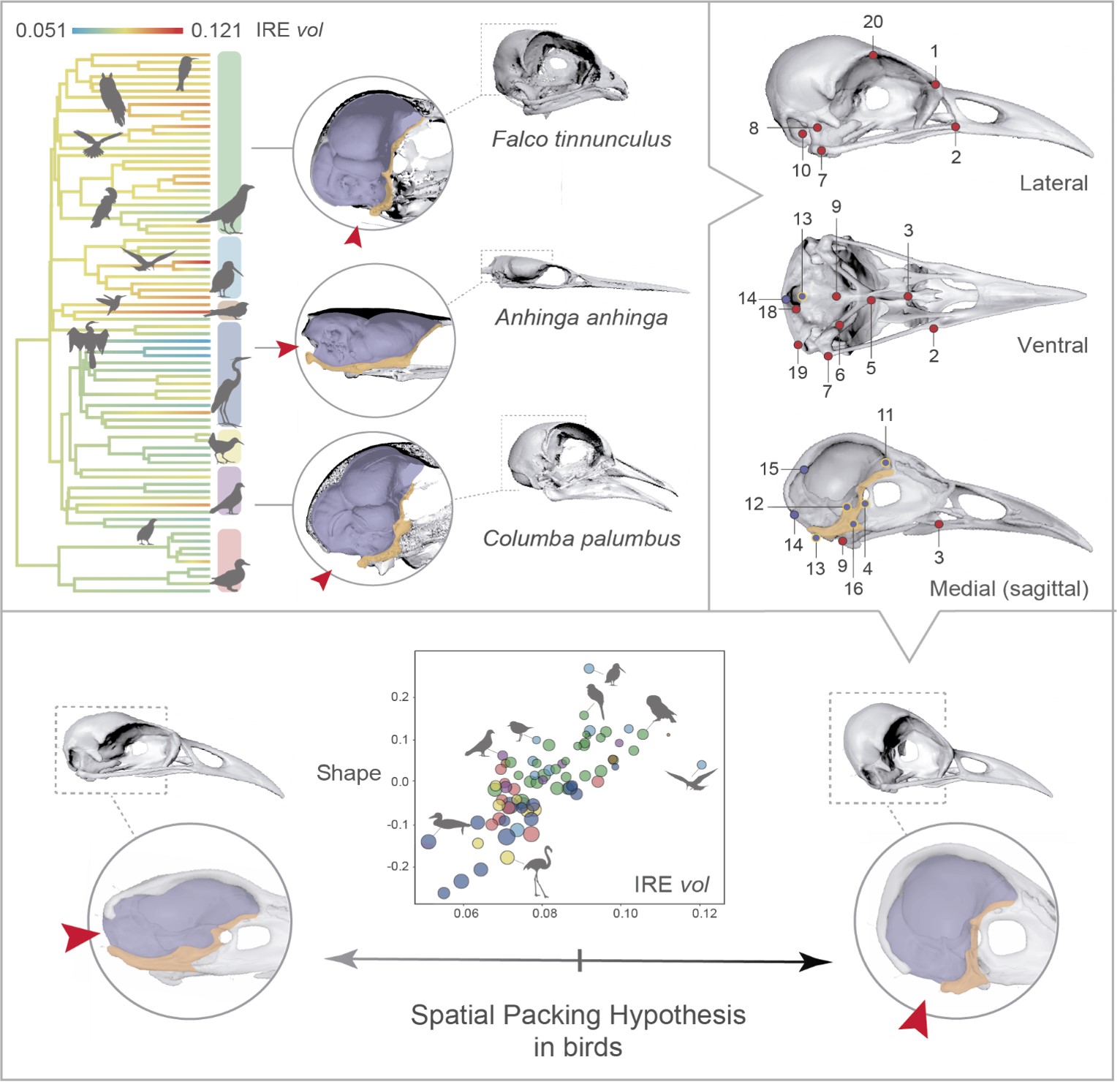Investigación
Beyond the beak: Brain size and allometry in avian craniofacial evolution
Jesús Marugán-Lobón, Sergio M. Nebreda, Guillermo Navalón, Roger B. J. Benson
Birds exhibit an enormous variety of beak shapes. Such remarkable variation, however, has distracted research from other important aspects of their skull evolution, the nature of which has been little explored. Key aspects of avian skull variation appear to be qualitatively similar to those of mammals, encompassing variation in the degree of cranial vaulting, cranial base flexure, and the proportions and orientations of the occipital and facial regions. The evolution of these traits has been studied intensively in mammals under the Spatial Packing Hypothesis (SPH), an architectural constraint so-called because the general anatomical organization and development of such skull parts makes them evolve predictably in response to changes in relative brain size. Such SPH predictions account for the different appearances of skull configurations across species, either in having longer or shorter faces, and caudally or ventrally oriented occiputs, respectively. This pattern has been morphometrically and experimentally proven in mammals but has not been examined in birds or other tetrapods, and so its generality remains unknown. We explored the SPH in an interspecific sample of birds using three-dimensional geometric morphometrics. Our results show that the dominant trend of evolutionary variation in the skull of crown-group birds can be predicted by the SPH, involving concomitant changes in the face, the cranial vault and the basicranium, and with striking similarities to craniofacial variation among mammals. Although craniofacial variation is significantly affected by allometry, these allometric effects are independent of the influence of the SPH on skull morphology, as are any effects of volumetric encephalization. Our results, therefore, validate the hypothesis that a general architectural constraint underlies skull homoplasy evolution of cranial morphology among avian clades, and possibly between birds and mammals, but they downplay encephalization and allometry as the only factors involved.
Disparity and Macroevolutionary Transformation of the Maniraptoran Manus
